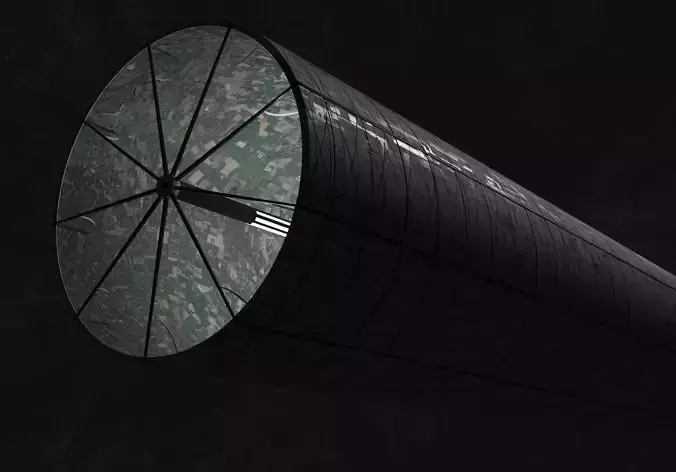1/28
The future for humanity is space. At some point humans will colonize space and build both industry and living spaces between the stars.When it comes to living space, humanity is likely to stay true to its roots and will create structures with artificial (centrifugal) gravity and with space for landscapes and cities.This model represents one of these structures. This space construction is a village sized O'Neill cylinder.The inside of the cylinder is made to represent a rural area for people that want to live in space, but also like the idea of living on a farm. Something like Space Amish.Thanks to the HD textures and the low poly construction, this model can be used both as a faraway background model, as well as a model for close up use.
Lore and science behind the space habitatThis space station/space habitat is a cylinder shaped construction of approximately 8 km in diameter. By rotating it creates centrifugal force capable of simulating gravity. This simulated gravity makes living on this station feel extremely natural and can be adjusted to be higher or lower than that of earth, depending on gravity. Unlike the larger constructions in my collection, this cylinder needs to be made with a glass roof in order to maintain its atmosphere. However, because it is smaller it can be build a lot sooner. Even with current level of technology a construction like this is possible to be build. Even although a construction like this would be under a lot of stress from its rotation, we don't even need our strongest materials to build this. High quality steel will do. A cylinder like this can be build without needing any form of sci-fi explanation or new technologies. So one could say that it is only a matter of time until humanity will build one of these. Considering this is one of the smaller space habitats in my collection, perhaps it might already be possible within the next 150 years.
Technical 3d model information
- Render ready for both Eevee and cycles
- Subdivision ready
- Low Poly
- Usable for real time render
- Quads only for optimal performance
- Contains cylinder construction textures (8000 x 8000)
- Contains surface textures (16000 x 8000)
- HDRI background image included (8000 x 4000)
- All textures are unique originals
- Contains albedo, metallic, emission, roughness and displacement maps
- aditionally, package also contains all textures at 50% of their size to lower render time when the model is used as background model
In real life, this construction would have a diameter of around 8 km in diameter. Some 3d programs do not display objects of this size very well. In order to avoid complications, and because most users want to decide the exact diameter themselves, the model itself is not scaled to the real life size.The glass dome in this model is build up out of multiple blender nodes in Blender to create a realistic look.Because the node system is different in each 3d program, the glass layer might be solid instead of transparent. this means you might need to recreate this effect by using the native node system in your program of choice, or delete this layer.
REVIEWS & COMMENTS
accuracy, and usability.




























